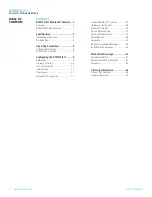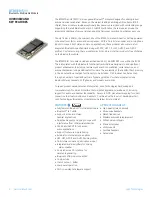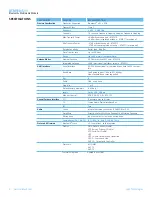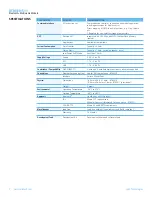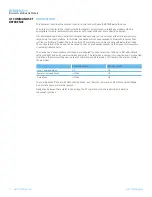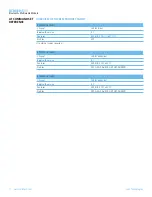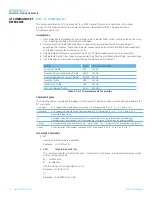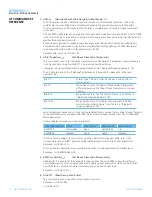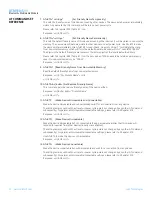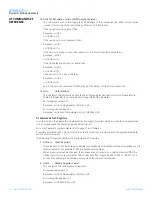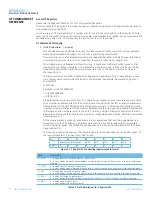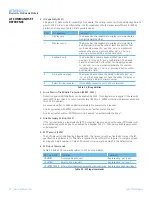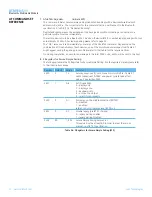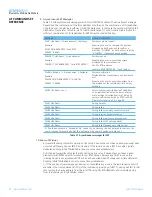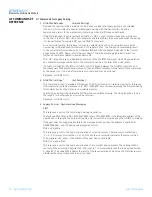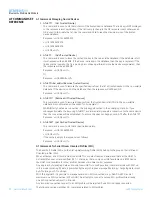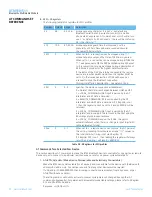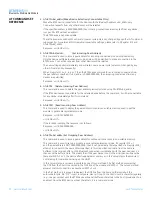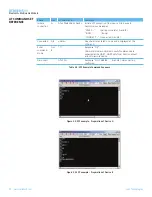
15
www.lairdtech.com
Laird Technologies
BTM510/511
Bluetooth
®
Multimedia Module
14. AT+BTV<bd_addr>,<uuid> {SDP Query for Service }
This command is used to interrogate the SDP database of the peer device <bd_addr> for the service
<uuid>. It results in an ACL connection and then an SDP transaction.
If the <uuid> service is present then
Response: <cr,lf>0
<cr,lf>OK<cr,lf>
If the <uuid> service is not present then
Response: <cr,lf>1
<cr,lf>OK<cr,lf>
If the device < bd_addr > cannot be reached, or is in non-connectable mode then
Response: <cr,lf>2
<cr,lf>OK<cr,lf>
If the SDP database is corrupt or invalid then
Response: <cr,lf>3
<cr,lf>OK<cr,lf>
If the device is not in idle mode then
Response: <cr,lf>4
<cr,lf>OK<cr,lf>
and in this case, the command AT+BTX may put the device into the correct idle mode.
15. ATIn
{Information}
This will return the information about the Laird Technologies device and its status. Please refer to
Table 4.2 (Appendix) for a complete list of supported ATIn parameters.
For recognized values of n:
Response: <cr,lf>As Appropriate<cr,lf>OK<cr,lf>
For unrecognized values of n.
Response: <cr,lf>Laird Technologies Inc, UK, (c)2009<cr,lf>
AT Commands for S Registers
As with modems, the Bluetooth module employs a concept of registers which are used to store parameters,
such as escape sequence character, inquiry delay time, etc.
For a list of general S registers please refer to page 17 and Table 4.1.
S registers associated with a particular profile or specific functions, are described in the appropriate profile
section of this document.
The following AT commands allow the manipulation of S registers.
1. ATSn=m {Set S Register}
The value part ‘m’ can be entered as decimal or hexadecimal. A hexadecimal value is specified via a ‘$’
leading character. For example $1234 is a hexadecimal number.
When S register values are changed, the changes are not stored in non-volatile memory UNTIL the
AT&W command is used. Note that AT&W does not affect S registers 520 to 525 or 1000 to 1010
as they are updated in non-volatile memory when the command is received.
2. ATSn?
{Read S Register Value}
This will return the current value of register n.
For recognized values of n
Response: <cr,lf>As Appropriate<cr,lf>OK<cr,lf>
For unrecognized values of n
Response: <cr,lf>ERROR nn<cr,lf>
AT COMMAND SET
REFERENCE


